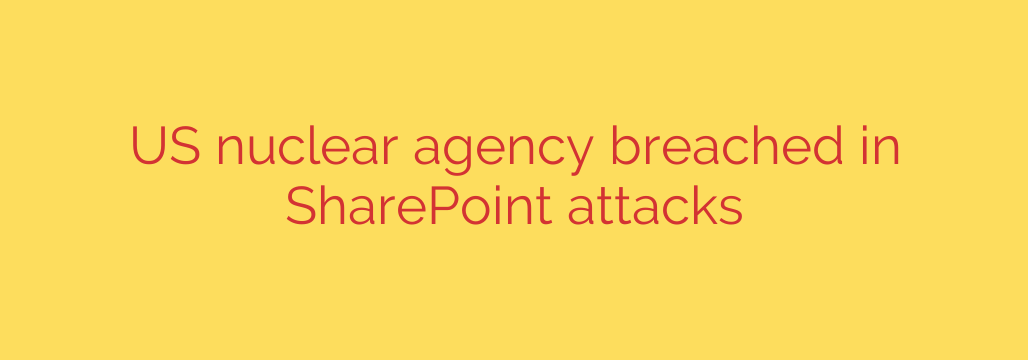
Critical SharePoint Flaw Leads to US Nuclear Agency Data Breach
In a sobering development that highlights the vulnerabilities present in even the most secure networks, a U.S. federal agency responsible for managing the nation’s nuclear stockpile has been successfully breached by cybercriminals. The attackers exploited a critical, now-patched vulnerability in Microsoft SharePoint to infiltrate the agency’s systems and exfiltrate sensitive data.
This incident serves as a stark reminder that no organization is immune to cyber threats and underscores the urgent need for diligent patch management and proactive security measures.
The Vulnerability at the Heart of the Attack
The hackers leveraged a specific and severe security flaw tracked as CVE-2023-29357. This is a privilege escalation vulnerability within Microsoft SharePoint Server, a popular web-based collaborative platform used by organizations worldwide for document management and storage.
What makes this particular flaw so dangerous is that it allows an attacker to gain administrator privileges on a SharePoint server without any prior authentication. In simpler terms, a remote, unauthenticated attacker could effectively take complete control of the server, impersonate any user, and access all stored data. Microsoft issued a patch for this critical vulnerability in June 2023, but attackers were quick to exploit systems that had not yet been updated.
High-Stakes Target: A National Security Agency Compromised
The victims of this sophisticated attack include the U.S. Department of Energy (DOE) and its semi-autonomous branch, the National Nuclear Security Administration (NNSA). The NNSA is tasked with the monumental responsibility of enhancing national security through the military application of nuclear science, which includes maintaining and securing the U.S. nuclear weapons stockpile.
According to reports, the attackers successfully stole data from both the DOE and the NNSA. It is crucial to note that officials have stated the breach was isolated to business and administrative networks. The cyberattack did not impact the nation’s critical defense systems or the operational security of the nuclear stockpile. Nevertheless, the exfiltration of any data from a high-value government target is a significant national security event.
A Notorious State-Sponsored Actor is the Prime Suspect
Evidence points towards a well-known Russian state-sponsored hacking group as the perpetrator of this attack. The group, often referred to as Midnight Blizzard (also known as APT28 or Fancy Bear), is believed to be operated by Russia’s foreign intelligence service.
This is the same group widely credited with the devastating SolarWinds supply chain attack that compromised numerous government agencies and private companies in 2020. Their continued focus on high-value government and infrastructure targets demonstrates a persistent and advanced threat from nation-state actors engaged in cyber espionage.
Actionable Security Steps to Protect Your Organization
This breach offers critical lessons for businesses and government agencies alike. While not every organization manages nuclear secrets, the methods used by attackers are often the same. Here are essential security measures to defend against similar SharePoint attacks:
- Immediate Patching is Non-Negotiable: The single most effective defense against this specific attack was to apply the security update released by Microsoft. Establish a rapid and reliable patch management process for all critical software.
- Assume You Are a Target: The attackers in this scenario targeted both critical infrastructure and other, less sensitive organizations with the same vulnerability. Every organization has valuable data and is a potential target.
- Enhance Network Monitoring: Implement robust logging and monitoring on your SharePoint servers. Look for unusual access patterns, unexpected data transfers, or the creation of new administrator accounts, as these can be early indicators of a compromise.
- Employ the Principle of Least Privilege: Ensure that user and service accounts only have the minimum level of access required to perform their functions. This can limit an attacker’s ability to move laterally through your network even if they breach an initial system.
- Segment Your Network: Isolate critical systems from general business networks. The fact that the NNSA’s operational systems were not affected highlights the importance of network segmentation as a damage-control measure.
Ultimately, this incident is a powerful illustration of the current cybersecurity landscape. Sophisticated attackers are actively exploiting known vulnerabilities faster than ever. Proactive security, rapid patching, and vigilant monitoring are no longer just best practices—they are essential for survival.
Source: https://www.bleepingcomputer.com/news/security/us-nuclear-weapons-agency-reportedly-hacked-in-sharepoint-attacks/








